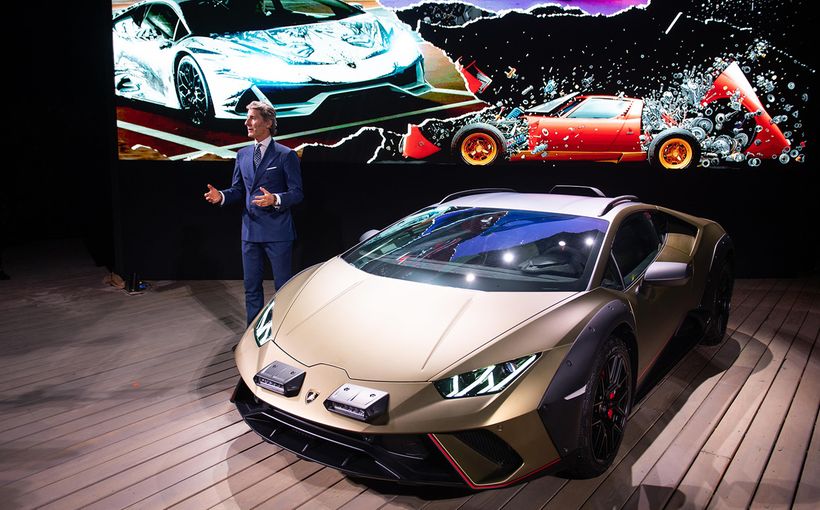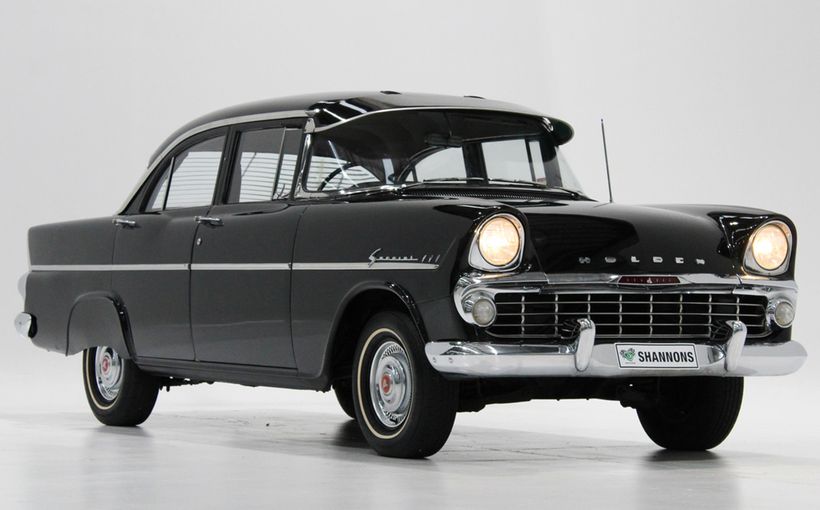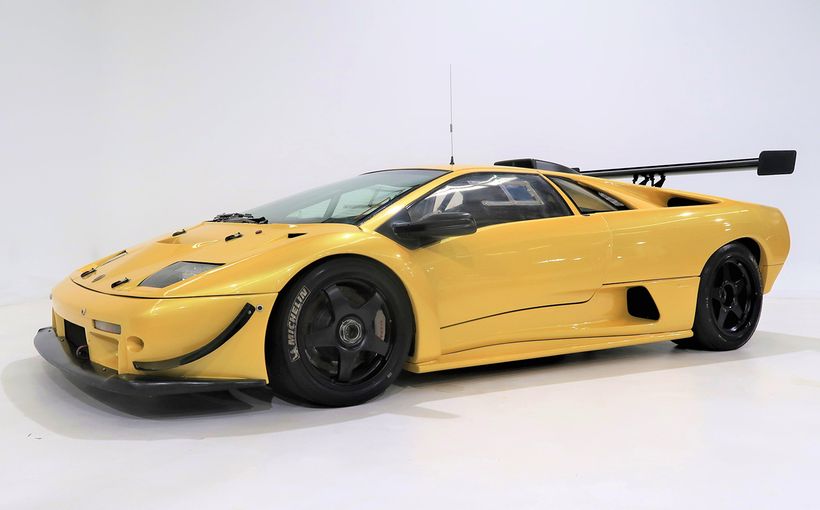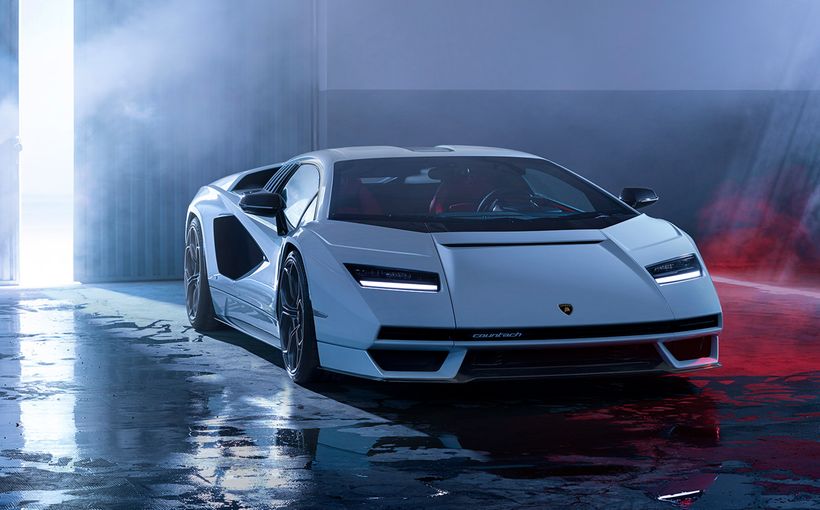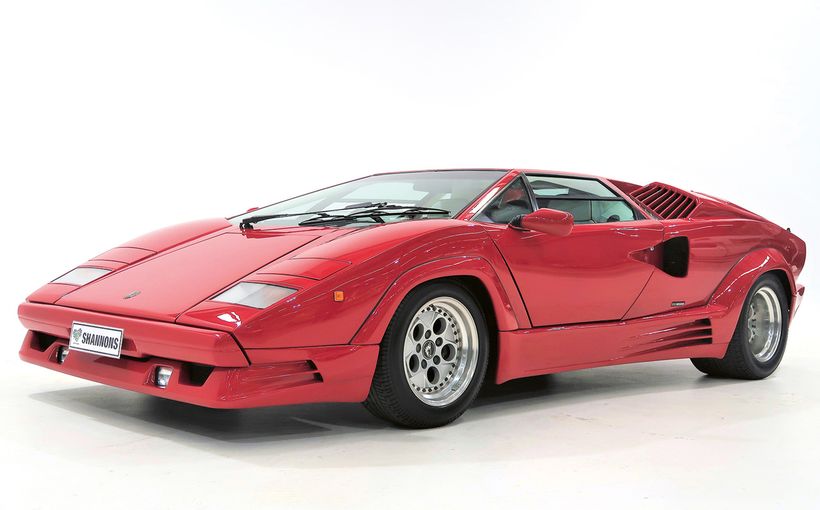
WORDS GIANCARLO PERINI PHOTOS JOHN LAMM & ARCHIVED PERINI
It’s faster than an F40, more precocious than the Countach and costs half an average country's national debt. So hold on to your hats, the Lamborghini Diablo is coming. And very impressive it is, too.
The new car from Sant' Agata not only has Marcello Gandini's inspired styling, but the status of fastest street-legal Grand Turismo in the world. Even in early guise the Diablo is credited with a top speed of 325 km/h and can reach 100 km/h in just 4.1 seconds.
Lambo's new baby is longer, wider, higher and heavier than the 19-year-old Countach, which was also penned - along with the Miura, Espada and Urraca - by Gandini. Take a close look at the photos and you'll agree the Diablo is a worthy replacement.
The original Diablo project is almost two years behind schedule. But Chrysler's takeover interrupted the birth of the new supercar. An unprecedented level of financial support saw staff and production facilities at Lamborghini greatly boosted. It goes without saying that if the new Diablo is fully legal in every country, the credit goes to Chrysler.
In April 1987, when Chrysler bought Lamborghini, the company employed 341 people. By the end of 1989 the number increased to 425. Nearly all of them joined the team of engineers and technicians working under Luigi Marmiroli, director of technical development. The team has grown from 14 to 81 in the past two years, and many have come from Ferrari.
Marmiroli is very proud of his crew and of the Diablo: "Our team had the task of creating the new Lamborghinis, from the first product concept, through the design, development and testing till the project is finalised, the car homologated world-wide and fully tested, ready for regular production," he said.

Marmiroli is not pleased to hear the car described as "womanish". But with the extraordinary power and performance being beyond refute and its •irrational price tag, there is not much left to argue about the Diablo but its look. You can bet the styling will be debated in the future as much as it has been over the past seven years.
Lamborghini had known since 1981 that replacing the Countach myth would be a most difficult task. Chassis design and performance were not a problem. Styling would be. By the time Chrysler moved in on April 23, 1987, the Countach replacement - codenamed P132 and designed _by Gandini - was finalised and approved. The orders for huge moulds and tools were ready to go and production was due to start in 1988.
On June 26, 1987 Lee lacocca and other members of Chrysler's board reviewed the model and were enthusiastic about it. But someone (guess who?) suggested Lambo should "revise some small details, here and there".
It took nearly 18 months and several design presentations, but eventually Chrysler convinced Gandini that the final design would be a winner and he should put his name to it.
We'll know the whole story by the time the Diablo is available for road tests. But obviously Chrysler did not keep the promise to keep its hands off Lamborghini as far as design is concerned.
Most outsiders who have seen the new supercar at first hand agree that it is both bold and elegant. But American journalist and aerodynamic specialist Nicholas Bissoon-Dath had a different perception: "I was expecting the new Lamborghini to be brutal and show muscles. To be masculine, virile and bold. The Miura was fantastic, the Countach amazing; the Diablo is closer to the Ferrari idea of smoothness and refinement and not a bold statement as the Countach was," he said.
As with the Miura and Countach, the mechanical layout, overall dimensions and the architecture have guided the Diablo's body design. The innovations are to be found in the longer (2650 mm) wheelbase, increased by 15 mm over the Countach, and the location of the two coolant radiators far back in the tail. "I wanted the car to perform like a jet," says Marmiroli "and with Gandini we decided to locate the radiators in the back just as in jets," he added.


When the Diablo project was started three goals were set for its design: Fully opening door windows, improved rear and rear three quarter visibility, and in- -4 creased performance. Nothing more.
Luigi Marmiroli delivered all that, but also ventured much further. He designed a new engine, developed a transmission that transfers torque to the front wheels when rear wheel slip is significant, then engineered the chassis and body structure using an unprecedented variety of materials and technologies.
As if that wasn't enough Marmiroli tested the car for 50 hours in the St Cyr wind tunnel in Paris. The Diablo is the first Lamborghini to have had an "air clinic" during development. Drag coefficient is a good 0.31. "But what really matters," says Marmiroli "is that at any speed the balance between front and rear is perfect, the car stays flat on the asphalt and there even is a bit of downforce".
Lamborghini will be also offering an optional rear spoiler, which gives slightly improved acceleration and a marginally lower top speed.
The Diablo reaches 325 km/h in fifth gear with the engine rewing at 7000 rpm. That's precisely when the all-new 48V, dohc, 5.7 litre, 60 degree V12 delivers 362 kW - just over 10 kW more than the F40 and 33 per cent more than the clean exhaust Testarossa.
The credit for the impressive engine output of 64.3 kW/litre, in three-way catalyst version, goes to Lamborghini's all-new integrated, sequential multipoint electronic fuel injection and ignition system. The engineers dubbed it LIE, for Lamborghini lniezione Elettronica, and built it from Weber components.
Both Diablo and Countach use a space frame, but there the difference ends. In the older car, the frame was all of round steel tubing. For the new model, the tubes are of square section, to which it is easier to attach components. Those tubes in the central part of the Diablo are of high-strength steel to build a sort of steel protection cage around the occupants. Tubing at the front and rear of the car is of milder steel to allow for controlled crush in case of an accident. Some pieces up front are even scored to direct the manner in which they bend under pressure. And adding stiffness to the cabin of the Diablo is a carbon fibre centre tunnel and a steel roof.

Fenders and doors are of aluminium alloy, which is stronger than the pure aluminum used in the Countach, and results in a better finish. There are six major aluminium body panels, which are stamped in Torino, then fitted and welded together at Lamborghini. The engine cover, front deck lid, rocker panels and bumpers and spoilers front and back are also carbon fibre. Marmiroli proudly points out that these composite pieces are done at Lamborghini, where they have been under development for four years, and are used because of their superior finish and strength.

As in the Countach, the gearbox is in line with the engine and inboard, but the transmission logic is completely different because of the addition of the transfer gear required to drive the front wheels. To facilitate the latter the engine turns in the opposite direction than the Countach, that is anti-clockwise. Another peculiarity of the Diablo is the very tall rear axle ratio, 2.41 . This is because there is a 1.59 reduction gear between the secondary shaft of the gearbox and the rear axle. In the Diablo VT (Viscous Traction) version, to be offered in 1991, up to 20 per cent of the torque is transferred to the front wheels when the rear wheels show a significant tendency to spin. Drive to the front is through a second transfer gear. Its 0.81 ratio, combined with that of the front axle ratio of 2.81, is designed to compensate for the different radius of the front and rear wheels.
The whole system, including the GK viscous coupling, fitted between the second transfer gear and the rear axle penalises the Diablo VT by a mere 44 kg additional weight.
Do not ask Marmiroli why the tyre specs of the Diablo are precisely those of the F40. He'll get angry and say you should know better. Lamborghini, it seems, and not Ferrari were the first to use tyres of different width front and rear on GT cars.

The only difference with the Diablo is that they are not on 17 inch rims, a natural development. For the time being the Diablo uses Pirelli P Zero tyres on three-piece aluminium alloy wheels. Don't look for a spare tyre. There isn't any. Statistics suggest that 98 per cent of tyre deflations occur slowly and progressively. Besides, Lamborghini reckon their patrons don't replace tyres on the road anyway. So they've fitted a tyre pressure warning system, developed in the US, and provide a "fix-a-flat" spray can as standard equipment.
The Diablo's gearbox is a totally new unit designed to host the transfer gears and viscous joint. It could have been a fashionable six-speed unit like the upcoming BMW 850, Maserati Shamal or Bugatti 035, but the technical team reckoned it wasn't necessary.
"In the Diablo we put and did everything that is needed," said Marmiroli. "Absolutely nothing is useless and this applies to every area. To give you an example, we investigated three alternative ways of driving the front wheels to add grip in certain conditions, but opted for a mechanical solution because it is the safest, most efficient and reliable. As for the gearbox, with all the torque we have (at 5200 rpm it tops 580 Nm) a six-gear unit would add only weight and further complexity."
There's no question the Diablo seems to have the right number of perfectly spaced gears. Take the engine to the 7500 rpm red line in first and you top 102 km/h, third will deliver 210 km/h and allow you to cover the standing kilometre in just 20.7 seconds before shifting into fourth.
Test driver Gino Moccia certainly didn't need to use the gearbox too often to measure the Diablo's top speed on the long and smooth ring at Fiat's Nardo test track in Southern Italy. The homologated value is an average of several runs in opposite directions and it's estimated that in some he topped 340 km/h.

But the Diablo is not only faster than the Countach, it's roomier, too. The cabin also has more space than the Testarossa. Adjustments for seat reach, and tilt and telescopic variations for the steering wheel, allow a range of alterations to fit any driver. There is plenty of legroom, but the pedals seem a bit too narrow.
The instrument cluster is, frankly, horrible. As are the dials, arranged on different levels. On the upper level, from left to right, are a large speedometer, smaller oil and water gauges, then the tachometer of the same diameter as the speedo. Below, one finds the oil pump, ..., fuel tank and voltmeter gauges.
We could not see the upper ones through the steering wheel at all. But nobody told us that the dashboard height can be adjusted by 15 mm. Marmiroli swears the ergonomics of the interior are fantastic and was designed in association with the University of Bologna. But we could not see the benefits.
There is no way you can reach the climate control push-buttons when driving, and even the superlative Alpine stereo is hard to operate. But, apart from the ugly and rough climate control switches, the central console is fine.
The doors open like Countach of course, but are not easy to lift from inside. And opening from outside is not too convenient either. The remedy to this is simple, apparently, and it's likely the production versions will be all right. The seats, upholstered with leather, look very attractive, but still lack lateral support.

The Diablo's ground clearance is a low (and legal) 140 mm. This, combined with racing type suspension design, independent all round, should ensure the wheels maintain their grip all the time. Front and rear unequal length control arms with coil springs over shock absorbers (one in front, two at the rear) and anti-roll bar do the job. The steering is a light, non assisted rack and pinion which requires 3¼ turns from lock to lock.
The vacuum assisted braking system incorporates massive ventilated discs, 330 mm at the front and 284 mm at rear.
Production of the Diablo starts around mid year and first deliveries are to be expected in October. Next year 500 Diablos should come out the completely new assembly lines of Sant' Agata Bolognese at a European price of around US$200,000.
In the meantime the question of whether Lamborghinis should be changed into such civilised and elegant machines rather than remaining unique and brutal will be hotly debated ... While the millionaires queue up to buy.
LAMBORGHINI DIABLO
GENERAL:
Mid-engine, rear drive (optional 4x4), two-door, two-seat Grand Turismo
List price US$200,000 (double that for Oz)
ENGINE:
48-valve, dohc, 60 degree V12
Bore x stroke 871mm x 80 mm
Displacement 5706 cm3
Compression ratio 10.0:1
Fuel system LIE port fuel injection
Power 362 kW@ 7000 rpm
Torque 580 @ 5200 rpm
TRANSMISSION:
Five-speed manual
Gear ratios (1) 2.31 (2) 1.52 (3) 1.12 (4) 0.88 (5) 0.68
Final drive ratio 2.41
MEASUREMENTS:
Wheelbase 2650 mm
Length 4460 mm
Width 2040 mm
Height 1105 mm
Kerb weight 1651 kg (wet)
Fuel tank capacity 100 litres
SUSPENSION:
Front: Wishbones, coil springs telescopic dampers, anti-roll bar Rear: Wishbones, two coils and dampers per wheel, anti-roll bar
STEERING:
Rack and pinion
BRAKES:
Front: 330x32 mm discs
Rear: 284x22 mm discs
WHEELS & TYRES:
Front: 245/40 ZR17 Pirelli P Zero
Rear: 335/35 ZR17 Pirelli P Zero
PERFORMANCE: (Manufacturer's figures)
0-100 km/h 4.09S
Top speed 325+ km/h

Protect your Classic. Call Shannons Insurance on 13 46 46 to get a quote today.



